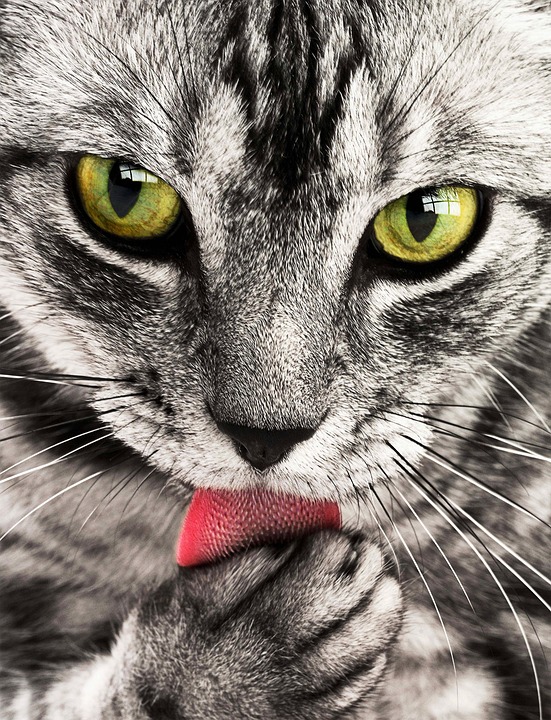Heading 1: Introduction
Cats are known for their independent nature and sensitivity to changes in their environment. When it comes to veterinary visits, many cats experience stress and anxiety, making it a challenging experience for both the feline and their owner. However, by creating a calm and secure environment during these visits, you can help alleviate your cat’s stress and ensure a more positive and comfortable experience. In this article, we will provide valuable tips and insights on how to achieve a stress-free veterinary visit for your beloved feline friend.
Heading 2: Understanding the Importance of a Calm and Secure Environment
Sub-heading 2.1: Recognizing the Impact of Stress on Cats
As highly sensitive animals, cats can easily become stressed during veterinary visits. This stress can lead to various negative consequences such as elevated heart rate, increased blood pressure, weakened immune system, and even behavioral changes. By creating a calm and secure environment, we can minimize these stressors and promote overall well-being for our feline companions.
Sub-heading 2.2: The Role of a Calm Environment in Reducing Stress
A calm environment plays a crucial role in helping cats feel safe and secure during veterinary visits. By minimizing loud noises, unfamiliar scents, and intimidating surroundings, we can help reduce stress levels and promote a more relaxed state for our feline friends.
Heading 3: Tips for Creating a Calm and Secure Environment
Sub-heading 3.1: Choosing the Right Veterinary Clinic
Finding a veterinary clinic that understands and caters to the unique needs of cats is essential. Look for clinics that have separate waiting areas or designated times for cats, as this can significantly reduce stress for your feline friend.
Sub-heading 3.2: Familiarizing Your Cat with the Carrier
Getting your cat comfortable with their carrier is essential for stress-free veterinary visits. Gradually introduce the carrier in your home environment, associate it with positive experiences, and make it a safe and cozy space for your cat. This will make the carrier less intimidating and reduce anxiety during travel.
Sub-heading 3.3: Minimizing Stressful Triggers
During your cat’s veterinary visit, it’s crucial to minimize stressful triggers. Keep the carrier covered with a familiar blanket to provide a sense of security. Additionally, avoid exposing your cat to loud noises, excessive handling, or interactions with other animals, as these can heighten stress levels.
Sub-heading 3.4: Utilizing Pheromone Products
Pheromone products, such as Feliway, can be effective in creating a calm environment for your cat. These products mimic the natural pheromones that cats release when they feel safe and secure. Spraying Feliway in the carrier or using a plug-in diffuser at home can help reduce stress and anxiety during veterinary visits.
Heading 4: Frequently Asked Questions (FAQs)
Sub-heading 4.1: How can I prepare my cat for a veterinary visit?
To prepare your cat for a veterinary visit, start by getting them comfortable with their carrier and associating it with positive experiences. Gradually introduce handling and touching, so your cat becomes accustomed to being touched by unfamiliar hands. Finally, consider scheduling a few “practice” visits to the veterinary clinic where your cat can get familiar with the environment without undergoing any procedures.
Sub-heading 4.2: Are there any natural remedies to reduce stress during veterinary visits?
While natural remedies may help some cats, it’s crucial to consult with your veterinarian before trying any new products. Some natural remedies, such as herbal supplements or essential oils, may not be safe for feline use. Your veterinarian can guide you on the most appropriate options for your cat’s specific needs.
Sub-heading 4.3: What should I do if my cat becomes aggressive or fearful during a veterinary visit?
If your cat becomes aggressive or fearful during a veterinary visit, it’s essential to prioritize their safety and the safety of veterinary staff. Inform your veterinarian about your cat’s behavior beforehand, so they can take appropriate measures. In some cases, sedation or the use of a towel or blanket may be necessary to ensure everyone’s safety.
Sub-heading 4.4: Can I request a specific veterinarian or technician for my cat’s visits?
Many veterinary clinics understand the importance of continuity and can accommodate your request for a specific veterinarian or technician. If your cat feels more comfortable with a particular person, don’t hesitate to discuss this with the clinic staff when scheduling appointments.
Heading 5: Conclusion
By providing a calm and secure environment during veterinary visits, you can significantly reduce your cat’s stress and ensure a more positive experience. From choosing the right clinic to familiarizing your cat with their carrier, implementing these tips will help create a stress-free environment for your feline companion. Remember, a calm cat leads to happier veterinary visits and improved overall well-being for your furry friend.








